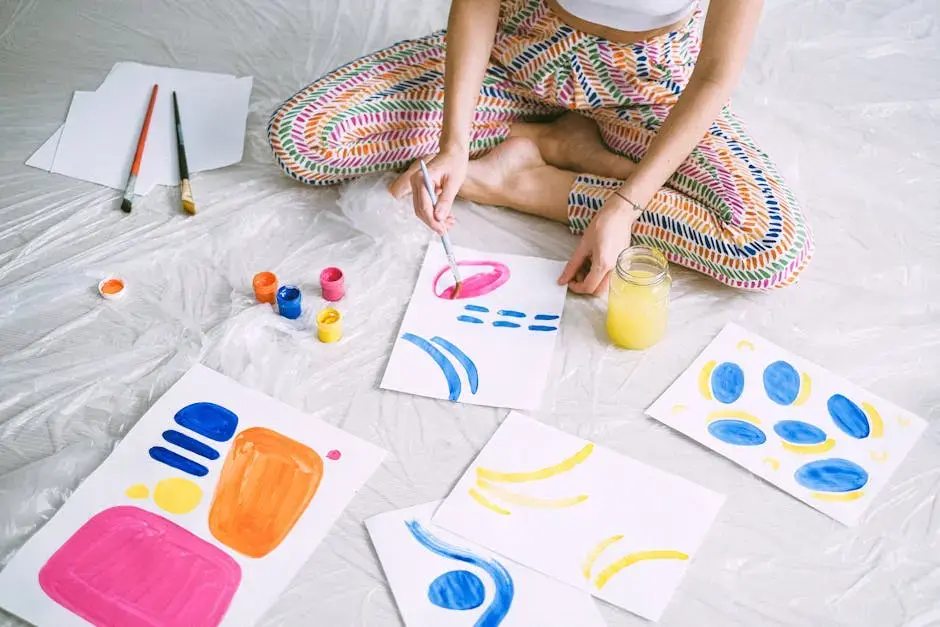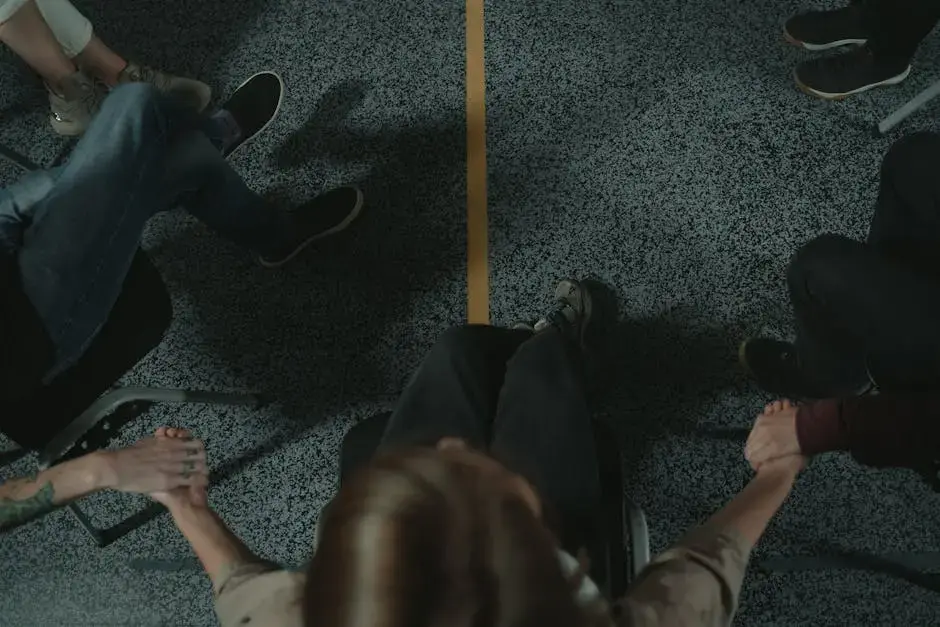How to Incorporate Art into DBT Therapy for Deeper Self-Exploration
- Karrie Stafford

- Oct 17, 2024
- 5 min read
Incorporating art into Dialectical Behavior Therapy (DBT) can pave new paths for self-exploration and emotional healing. With creative expression, individuals can access feelings and thoughts that might otherwise remain hidden. In this blog post, we'll dive into various techniques and benefits of integrating art into DBT therapy, making this transformative approach accessible and relatable.

Understanding DBT Therapy and Its Core Principles
Dialectical Behavior Therapy, or DBT therapy, is a sophisticated therapeutic approach primarily designed for individuals facing emotional regulation issues. At its core, it emphasizes the balance between acceptance and change. This dual focus helps clients understand their thoughts and feelings while simultaneously working towards positive change in their lives. By fostering both validation and transformation, DBT becomes a holistic tool for healing.
The principles of DBT include mindfulness, distress tolerance, emotional regulation, and interpersonal effectiveness. These principles serve as a sturdy foundation for self-discovery. Each principle encourages individuals to reflect on their internal experiences and behaviors. For instance, practicing mindfulness can help clients become more aware of their emotions, allowing them to identify feelings they might have previously suppressed.
Through this profound self-awareness, individuals can begin to explore the emotions and triggers that affect their well-being. The significance of these principles is not only academic; they have real-world applications that can lead to healthier relationships and an improved sense of self. Ultimately, DBT therapy provides an organized structure within which art can serve as an additional tool for exploration and healing.
The Role of Art in Emotional Expression and Processing
Art can be a powerful vehicle for emotional expression. Many individuals struggle to vocalize their feelings, often resulting in bottling them up. By incorporating different forms of artistic expression—such as painting, drawing, or even sculpture—in DBT therapy, therapists can provide clients with tangible tools to express their inner worlds. This creative outlet can be the key to unlocking emotions that are otherwise difficult to articulate.
Moreover, art facilitates an unconventional dialogue with oneself. When engaged in the creative process, clients may find that their artwork communicates sentiments they were unaware of, offering new insights into their emotional states. This unexpected discovery can propel the therapeutic process forward, encouraging deeper self-exploration within a safe and supportive environment.
Through art, individuals can also externalize their emotions, making it easier to confront and process them. By examining their artwork, clients can identify recurring themes or issues that stand out visualized on the canvas. This method of distancing emotions can ease the burden of directly talking about them, paving the way for more meaningful conversations with their therapists.
Creative Techniques for Integrating Art into DBT Sessions
Integrating art into DBT sessions can take on various forms, making the therapeutic experience both unique and engaging. One effective method is to introduce guided painting sessions where clients are encouraged to create artwork that reflects their current emotional state. This could involve using colors that resonate with particular feelings or letting the brush guide their movements without a defined outcome.
Another approach involves using art to visualize thoughts, which can be particularly powerful for those struggling with negative self-talk. Clients may be prompted to create a visual representation of their inner critic, which can help them recognize and question those damaging narratives. By externalizing these thoughts into art, they can more easily challenge and modify their self-perceptions.
Collage-making is yet another creative technique that can foster expression within a structured DBT session. Clients may be given magazines and asked to create collages that represent their hopes, fears, or personal journeys. This hands-on activity not only provides an opportunity for creativity but also acts as a springboard for discussion about the elements they choose to include, revealing underlying motivations and desires.
How Art Helps with Mindfulness in DBT Practices
Mindfulness is a key component of DBT practice, and art can enhance this vital skill through deliberate focus and attention. Engaging in art encourages individuals to remain present, shifting their thoughts away from distractions and anxieties. Techniques such as mandala coloring or focused sculpting empower clients to immerse themselves fully in the creative process while cultivating a sense of tranquility and calm.
In addition, certain art techniques, like clay modeling or watercolor painting, require concentration and fine motor skills. This focus can help clients anchor themselves in the moment, allowing them to practice mindfulness naturally. As they create, they discover the rhythm of their breath and the sensations of their movements, grounding them and enhancing their overall self-awareness.
Art can also serve as a meditative practice, where clients set aside time to simply create without any judgments or expectations. This open-ended process fosters an environment in which clients can reflect on their thoughts and emotions more freely, leading to the uncovering of deeper layers of self-awareness that often lie dormant beneath the surface.
Case Studies: Success Stories of Art in DBT Therapy
In examining real-life applications of art in DBT therapy, we find inspiring success stories that demonstrate its transformative power. One compelling case involved a young woman struggling with anxiety and depression. Through the integration of expressive painting in her DBT sessions, she began to visualize her emotions and transformed her anxious feelings into powerful abstract forms, allowing her to confront fears she had long avoided.
Similarly, another case highlighted the journey of a teenager who felt isolated and disconnected from his peers. Through creating a series of collages, he expressed his longing for connection and his fear of rejection. The tactile experience of selecting images and arranging them allowed him to articulate complex feelings, which led to deeper discussions with his therapist about social interactions and relationships.
These case studies reflect the profound impact of integrating art into DBT therapy. Each individual's journey underscores how creativity can break down barriers in communication, revealing insights and emotions that might otherwise remain hidden. The therapeutic bond formed through collaborative artistic expression fosters trust and connection, further enriching the healing process.
Tips for Therapists: Fostering Creativity in DBT Sessions
For therapists looking to incorporate art into DBT sessions, fostering a supportive environment is essential. Encourage clients to explore various forms of artistic expression by providing a variety of materials. Simple supplies like colored pencils, paper, and clay can empower individuals to discover what resonates with them personally, nurturing their creative instincts.
Creating a no-judgment zone is equally important. Clients should feel free to express themselves without fear of criticism, as this sense of safety is crucial for authentic expression. Remind them that the purpose of art in therapy is not to produce a masterpiece but to explore feelings and thoughts visually.
Additionally, therapists can guide clients through the process by asking open-ended questions about their artwork. For example, asking, 'What does this piece represent for you?' or 'How did you feel while creating this?' can encourage a reflective dialogue that enhances both self-discovery and therapeutic insight. Remember, facilitating creativity within DBT is a skill that can greatly enrich the therapeutic experience.
Embracing the Artistic Journey in DBT Therapy
By embracing art as a medium within DBT therapy, individuals can unlock profound insights into their emotions and behaviors. The creative process not only enhances self-awareness but also fosters a sense of empowerment and healing. Whether it's painting, drawing, or any other form of artistic expression, integrating art can significantly elevate the therapeutic journey.




Comments